"Fourtification" for Improvisation
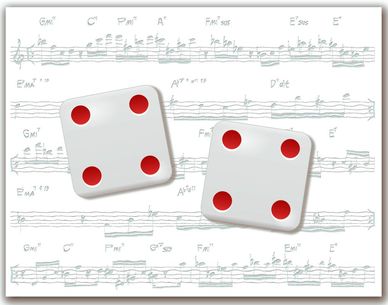
Becoming an important part of the improviser's toolbox in the early 1960's - most notably through innovations by pianist McCoy Tyner and others - mastery of the Perfect 4th (P4th) remains an essential and challenging skill set for the present day improviser.
.
In the late 19th and early 20th Centuries, harmony based on fourths, known as Quartal Harmony, had been introduced via the symphonic works of several renowned European classical composers; namely Claude Debussy, Maurice Ravel and Bella Bartok, being a few of the most prominent.
As mentioned, the focus of "Fourtitude" is the combining of Perfect 4th pairs to create lines that weave seamlessly in, out and through the underlying harmonic structure; but before we get to the good stuff, let's take a look at what makes a Perfect 4th so "perfect" in the first place.
Shall we?
UPDATE: "Fourtitude" has been combined with "Lines in 4ths: The iii-VI-ii-V-I Progression" as a single 98 page pdf volume "Fourtitude + Lines in 4ths: iii-VI-ii-V7"
In the notation graphic of the harmonic series shown below, the first 4 notes (in the bass clef) read: C - C - G - C. The interval relationships, from bottom to top, read:
C with itself - Perfect Unison,
C to C - Perfect Octave,
C to G - Perfect 5th,
G to C - Perfect 4th.
These lower overtone series intervals are commonly used, in combination, as the musical drone that underlies Carnatic, and other of Eastern musics.
You can't get much more "perfect" than that!
Now that we're hip to this concept of perfection, we'll move on to that popular collection of P4ths, commonly known as the Major Scale.
A string of consecutive Perfect 4ths, starting on the note B, looks like:
B - E - A - D - G - C - F = C - D - E - F - G - A - B = C Major
That all looks very "fourthright", right!? Except that the "wrap around" 4th, namely F - B, is not "perfect".
Rather, it's an augmented 4th (aka diminished 5th, flatted 5th or tritone). While it may not be perfect, it's nevertheless an extremely important element of Western harmony.
So what better way to "venture fourth" than with the below Major Scale sequence (partially shown), "imperfections" and all. This Major Scale sequence is presented in all keys and will familiarize you and enhance your technical facility with this interval "fourthwith" (and with a little practice - it makes "perfect").
Referring back to the C Major scale spelled out in consecutive P4ths above, if we remove the first and last notes - F & B, which create a tritone - we get:
E - A - D - G - C = C - D - E - G - A = C Major Pentatonic
A pentatonic scale is literally any scale containing 5 notes. A Major Pentatonic scale can be defined as either of the following:
- A Major Scale with its tritone (created between its 4th and 7th scale degrees) removed, and
- A collection of 4 consecutive ascending P4ths, starting on the Maj. 3rd of the key in question.
The below graphic is an example from "Fourtitude" of a pair of resulting 2-measure pentatonic sequences, in which an Ab Maj Pentatonic is formed from 2 ascending P4ths, a descending P5th (inverted P4th), plus one more ascending P4th, within the the first 5 notes of the initial measure.
Below, the example graphic shows two lines of 5 measures each (there's more in the book). The first line represents the basic 4-note, prime form pair combinations with the P4th C & F, ascending chromatically, without repeating the same note in any one measure. For example, C-F & Db-Gb in the first bar, C-F & D-G in the second, C-F & Eb-Ab in the third measure, C-F & E-A in the fourth bar, and C-F & F#-B in the fifth. C-F & F-Bb was omitted because of the repeating F.
The harmonic implications are by no means complete as labeled here. Some were obvious - F-7 & F Maj7 (Ab6). Labels G7sus4 & D-11 are pretty much interchangeable throughout the book, depending on the rest of the momentary harmonic environment.
Eb-7 9 13 (Ab7 13/ Db) & D7 #9 13 (Ab7 #9 13) in the 1st and 5th bars of each line, might be considered somewhat ambiguous as to their respective labels, and as well, could be named according to the rest of the momentary harmonic structure (bass line, etc.) and are labeled here only for reference.
These five P4th pairs form the basis of the rest of the exercises and sequences presented in "Fourtitude".
These are but four of the dozen ii-V7 examples presented in "Fourtitude", in all 12 keys with the harmonizations heard here, notated in C at the end of the book.
Ex.1
May the Fourths be with you!
B. Stern
UPDATE: "Fourtitude" has been combined with "Lines in 4ths: The iii-VI-ii-V-I Progression" as a single 98 page pdf volume "Fourtitude + Lines in 4ths: iii-VI-ii-V7"









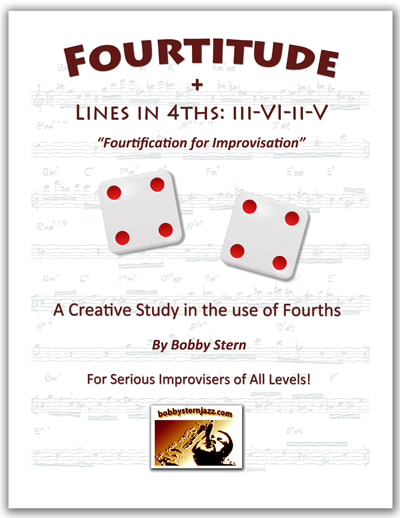
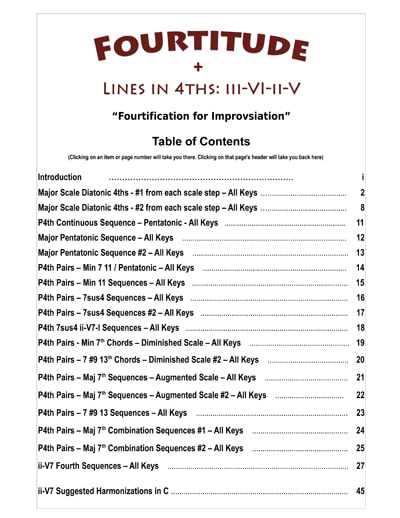
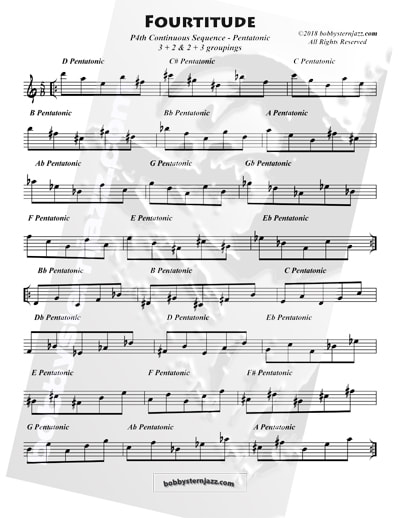
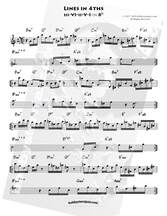

 RSS Feed
RSS Feed









